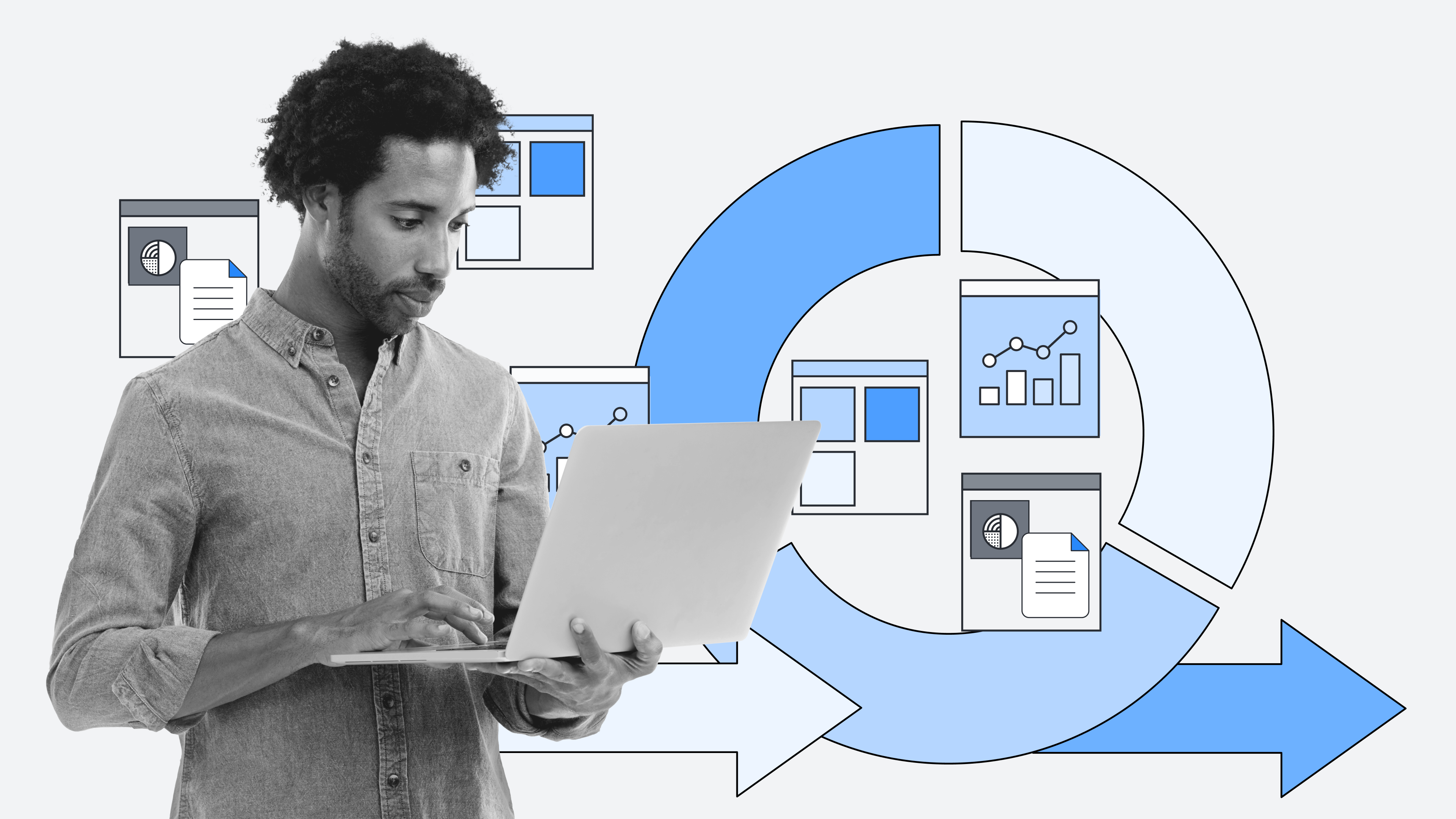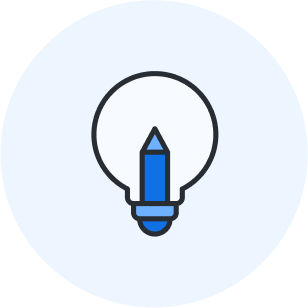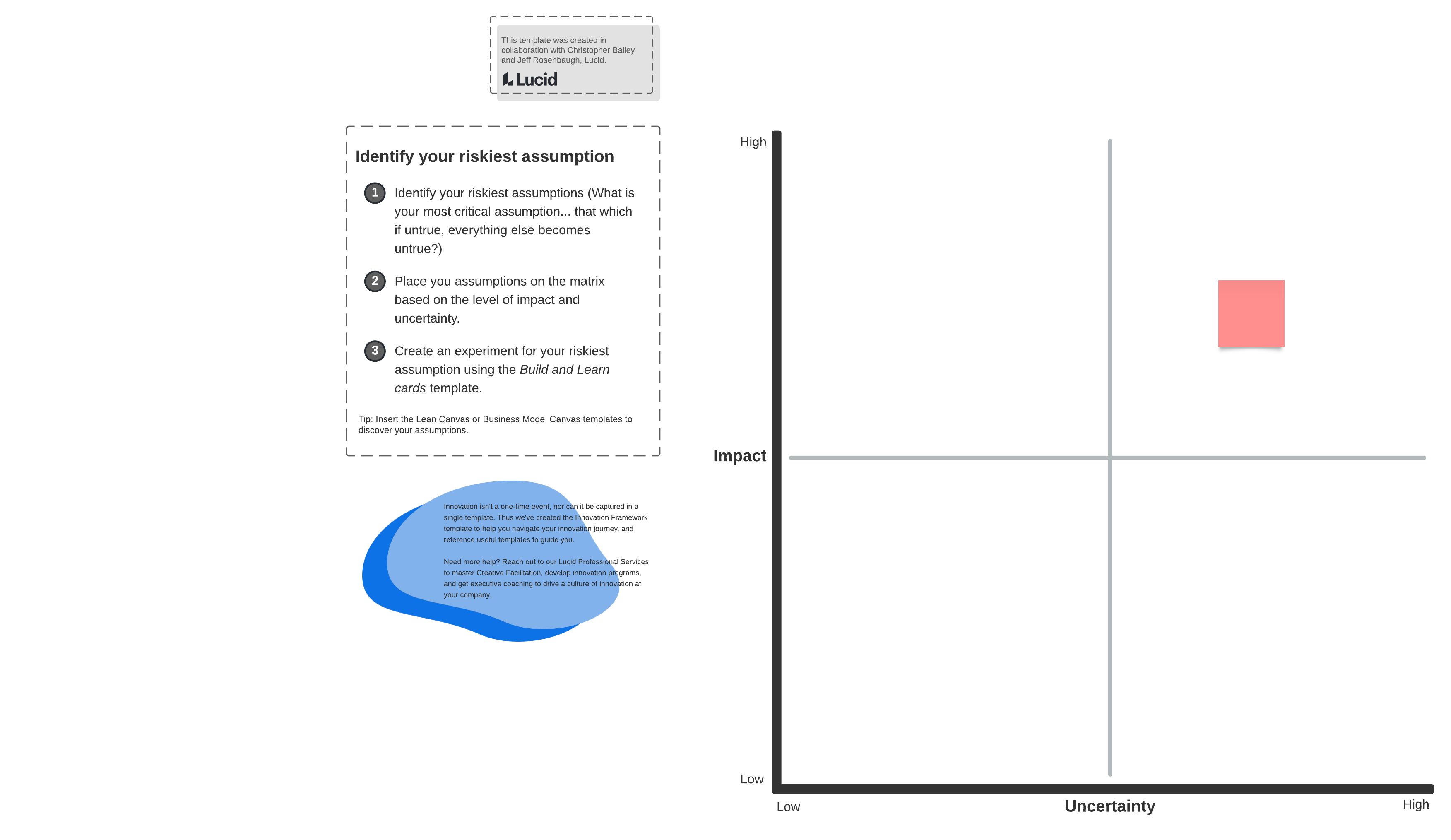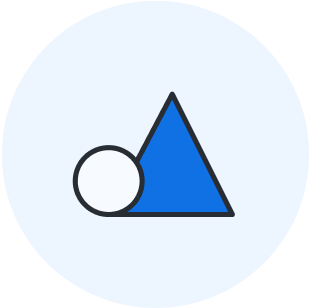
Agile innovation: Applying Agile and Lean practices to boost innovation
Reading time: about 8 min
Topics:
Recessions and uncertainties in the market or business landscape can stifle innovation as organizations tighten their belts and focus on survival. But for businesses that do prioritize innovation, there are ample opportunities to uncover and gain competitive advantages.
Of course, that’s easier said than done when you’re facing tough business realities. That’s why the important thing is not to stop innovating but to ensure that your innovation process is efficient.
So, how do we make innovation—an often nebulous and inherently creative process—efficient?
Thankfully, we don’t have to reinvent the wheel. Instead, we can pull from popular business and development practices like Agile and Lean. Let’s walk through some key takeaways from Agile and Lean approaches that you can use to make your own innovation processes more efficient.
The benefits of an Agile approach to innovation
Agile promotes breaking down projects into smaller iterations, allowing for constant validation and collaboration. Lean innovation focuses on minimizing waste. Unlike traditional linear approaches, both Agile and Lean innovation encourage ongoing assessment and adaptation throughout the process. This strategy results in:
Continuous questioning and validation
Agile teams don't just ask critical questions at the beginning—they embed questioning and validation into every stage of development.
This approach enables teams to detect and address issues early, reducing the risk of investing time and resources in the wrong direction.
Flexibility for pivoting
By embracing an iterative approach, teams can quickly pivot if they discover they're on the wrong track. Agile innovation allows for adaptability and responsiveness to changes—whether that’s shifting customer interests, changing market dynamics, or evolving user needs.
An engaged workforce
Agile and Lean innovation promote collaboration and a shared responsibility for excellence, leading to higher employee engagement and creativity.
In Agile environments, every team member is empowered to contribute to the success of the project. Instead of relying solely on managerial oversight, Agile fosters a culture where each individual takes ownership and strives for excellence.
Agile practices also promote collaboration and cross-functional teamwork, fostering a sense of engagement and ownership among team members. This collaborative environment encourages innovation and creativity, as team members feel empowered to contribute their ideas and expertise.
How to apply Agile (and Lean) practices to innovation
Clearly, an Agile approach to innovation has great potential. But how can you actually apply those principles to your innovation process?
Embrace the MVP
MVP stands for "minimum viable product" and is a crucial concept in efficient innovation. You can think of an MVP as more of a process rather than a product that you’re trying to create. An MVP allows you to step back and consider the following:
-
What am I trying to create?
-
Why am I trying to create this?
-
What assumptions have we made about what we're trying to create that we need to validate?
In other words, your MVP is not merely a scaled-down version of a product. Instead, it’s the version that catalyzes the build-measure-learn feedback loop with minimal effort and development.
The primary goal of an MVP is to enable rapid learning and iteration—essential components of efficient innovation. Some may argue for a minimum valuable product, or a minimum desirable product to focus on something a customer may want to buy. But at this stage, it is more important to focus on learning than on getting to market.
While creating an MVP is a practice tied to software development, organizations across every industry can use the principle of an MVP in their innovation projects or portfolios to kickstart the iterative innovation process.

Learn more about embracing the MVP for innovation
Embracing the MVP is key for experimentation. Learn more about the tactical skills you need to successfully develop your innovative ideas.
Read moreAlign with the end goal
Many individuals claim to prioritize efficient innovation without grasping the essence of what they're innovating or why. Merely starting to create without a clear understanding of the problem or goal contradicts the principles of efficient innovation.
Focus on the end result and the problem you're trying to solve rather than fixating on a specific solution. Instead of assuming what solution will work best from the start, use your MVP to work backward to solve a problem.
Validate assumptions
Efficient innovation involves validating assumptions before investing significant time, money, or resources. Agile and Lean practices help us hone in on our core goals and requirements and verify that we are focusing on the right problems before we invest in solutions.
Before you begin, consider questions such as "What job am I trying to accomplish?" and "Do people have this need?"

Adopt this mantra: Process over product
Remember: MVP is best understood as a process rather than just a product to be created. It's a tool for stepping back and reevaluating the purpose and necessity of what you're creating. By focusing on the process, you can save time by consistently iterating and evaluating your work.
Test hypotheses
Finally, you need to test your hypotheses. Like the scientific method, Lean methodology requires defining and validating assumptions, then testing your hypotheses and measuring the results. Creating an MVP serves as a means to test these business hypotheses and ensure focus on the right objectives.
The two crucial hypotheses to validate are the growth hypothesis and the value hypothesis:
-
Growth hypothesis: Your growth hypothesis is your assumption of how sustainable growth can be achieved in your product or business.
-
Value hypothesis: Your value hypothesis tests whether your product or service will deliver value to the customers and generate revenue.
To test these hypotheses, you’ll need to ask critical questions:
-
Will there be increasing demand for the product?
-
Will it generate revenue?
-
Does the product meet a real need?
-
How does it compare to alternatives on the market?
-
Are customers willing to pay for this solution?
From there, you’ll need to establish a framework for testing (answering) these questions and identify key metrics to measure the results of your tests. This can include A/B testing, pilot programs, customer feedback, and user testing sessions.
By testing your hypotheses, measuring the results, and experimenting with your iterations, you can align your value propositions with the evidence you find to more efficiently innovate solutions that actually work—for your business and your customers.

Agile innovation example
So what does this look like in action? Let’s walk through how a product and UX team could use this innovation process with Agile and Lean principles to identify new product improvement ideas.
-
Identify the goal
Start by defining the overarching goal or problem you are trying to solve—as well as how you’ll measure success. You may decide to send out user surveys or observe your users to identify just what challenges or problems they have. For example, an online retailer may discover that their users struggle with completing certain tasks—like finding their ideal size and fit. In this case, the goal would be to help users find their size and fit efficiently.
-
Develop user personas
Identify the target audience personas based on demographics, interests, and behaviors. Personas help the team more deeply understand whose problem they are solving, including motivations, challenges, and expectations.
-
Design experiments and test in sprints
At this stage, you want to validate that you have the right personas and have identified their real problem. Draft experiments to help you better understand your users and start to learn.
These experiments essentially become your backlog for an innovation sprint. You’ll want to prioritize these experiments based on how likely you believe they are to impact the metrics you've put in place or how much they will answer key questions you have about the domain. You can think of this as identifying and testing your most critical assumptions.
-
Execute sprints to deliver MVPs
Work on the tasks identified for the sprint, focusing on the highest-priority experiments first. At this stage, you’ll start delivering MVPs to your stakeholders so you can efficiently test ideas and iterate. The focus here is on speed, not perfection. In our online retailer example, your initial MVP may be a mock-up of a system to filter products by different variables.
As you learn and get more clarity, you can start building out your roadmap further, testing the next assumption or two. Your Agile sprints may start off very short (daily) and then start getting a bit longer (no longer than 2 weeks) to accommodate the more comprehensive work that needs to be done.
Hold daily stand-up meetings to discuss progress, roadblocks, and adjustments needed.
-
Continuously review, adapt, and iterate
At the end of each sprint, review the work completed, measure innovation results, and gather feedback from stakeholders or target audience members. Use these metrics and feedback to make any necessary adjustments to the innovation plan or features for the next sprint.
Agile innovation: Do more with less
Businesses that fail to innovate will ultimately fail to compete. Even–and perhaps especially–in turbulent times, business leaders must continue to prioritize innovation as a core factor in their long-term success.
But this doesn’t mean you have to sacrifice your business’s finite resources on the altar of innovation.
Instead, by adopting an Agile innovation process, organizations can do more with less. Integrating Agile and Lean principles into your organization’s workflows and philosophy gives you the tools you need to succeed in any business environment—and unlock new opportunities and key competitive advantages to build positive momentum.

Want a walkthrough of how to create your own innovation framework?
Get the complete guideAbout Lucid
Lucid Software is the leader in visual collaboration and work acceleration, helping teams see and build the future by turning ideas into reality. Its products include the Lucid Visual Collaboration Suite (Lucidchart and Lucidspark) and airfocus. The Lucid Visual Collaboration Suite, combined with powerful accelerators for business agility, cloud, and process transformation, empowers organizations to streamline work, foster alignment, and drive business transformation at scale. airfocus, an AI-powered product management and roadmapping platform, extends these capabilities by helping teams prioritize work, define product strategy, and align execution with business goals. The most used work acceleration platform by the Fortune 500, Lucid's solutions are trusted by more than 100 million users across enterprises worldwide, including Google, GE, and NBC Universal. Lucid partners with leaders such as Google, Atlassian, and Microsoft, and has received numerous awards for its products, growth, and workplace culture.
Related articles
Why you need an innovation strategy ASAP (with tips to get started)
You can’t innovate consistently without a strategy. Uncover all the benefits and how to get started here.
8 common product innovation mistakes (and what to do instead)
Learn how to avoid common product innovation mistakes with insights from Lucid’s Jeff Rosenbaugh and Christopher Bailey.
How to turn your document repository into an innovation repository
Not all document repositories will help you innovate. Find out how to create one that boosts alignment and creativity here.
The ultimate Agile meetings toolkit for hybrid teams
Get Agile meeting tips and templates to keep your hybrid team ahead of the curve.
